By Laura Johnson, UVM Extension and Spencer Hardy, Vermont Center for Ecostudies
With more than 350 species of wild bees in Vermont, it's daunting to understand them all. Presented here is a brief overview of apple pollination and some important bees for, and supported by, apple blossoms.
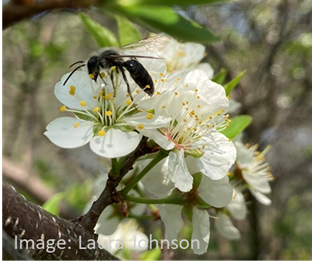
Apple pollination overview: Many apple cultivars are self-incompatible or partially self-fruitful. This requires interplanted compatible pollinizer varieties for pollination and viable fruit set in large single variety blocks. Apple bloom time varies depending on cultivar, but generally apples flower at a time in the spring when there are diverse and abundant wild insect pollinators for pollination. The presence of wild bees has been shown to increase honey bee movement between trees, increasing the chance of cross pollination. In many orchards where wild pollinators are sufficiently abundant, managed bees may not be required for commercial yield and fruit quality.
The Bees
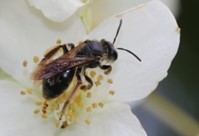
Mining Bees (genus Andrena) - Mining Bees are among the most abundant apple pollinators. At least 12 species have been recorded on apples, with the Hawthorn Miner (Andrena crataegi) being the most common. This species is active from mid-May through June. Adding June blooms to a farmscape might help increase numbers of this and other species. Blackberries, American Chestnut, Cilantro, and Staghorn Sumac are all good options for this bee.
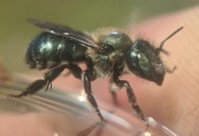
Mason Bees (genus Osmia) - These shiny blue bees are efficient pollinators of many spring blooming fruits. The Blue Orchard Bee (Osmia lignaria) is a well known fruit tree pollinator that is active as early as late March. Females can be identified by the pollen (or pollen collecting hairs) underneath the abdomen. Many species nest above ground in pre-existing cavities (including bee hotels).
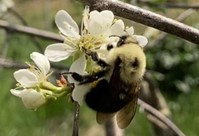
Bumble Bees (genus Bombus) - These large, charismatic bees are great pollinators of most crops. Queens emerge in early spring and do most of the apple pollination. Smaller workers are born in early June. Early blooming flowers (willows, maples, etc) and nesting habitat (hedgerows and woodlots) are important to maximize local populations. There are 13 species in Vermont, many of which can be identified in the field with practice. Photo credit Laura Johnson.
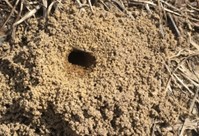
Unequal Cellophane Bee (Colletes inaequalis) - This is one of the first bees to emerge in the spring. Often the first sign is “ant” hills with pea-sized holes - the nesting sites of females. Other ground nesting bees make similar nests, but the large aggregations of this species in sandy soil are particularly noticeable. This species is done flying by early June but is likely an important pollinator of some orchards, especially early blooming ones near sandy soils (preferred nesting habitat).

Pure Green Sweat Bee (Augochlora pura) - These brilliant metallic bees are one of several green species that may visit fruit crops. The Pure Green Sweat Bee nests in rotting logs and stumps, and can be abundant in many habitats, especially around heavy or wet soils where ground nesting bees are sparser. Leaving large logs to rot near an orchard is an easy way to attract this and several other log-nesting species.

For more on “Know Your 5”, visit https://vtecostudies.org/know-your-5/

